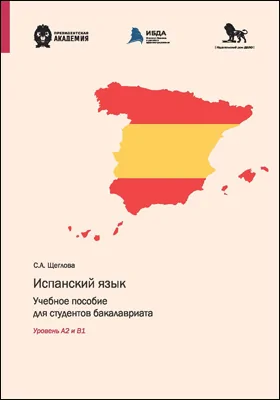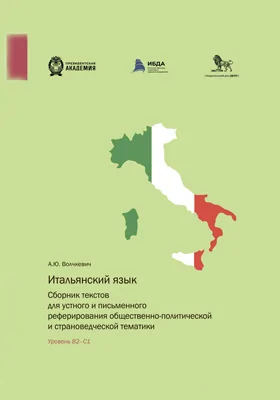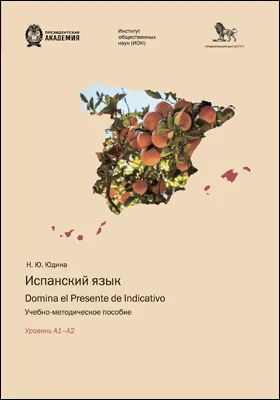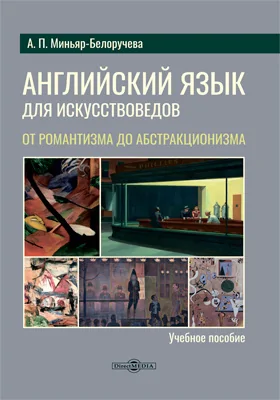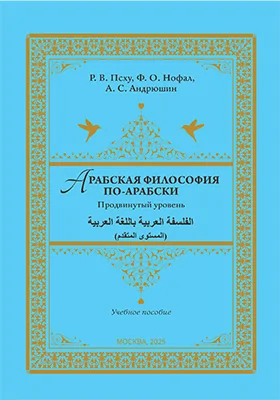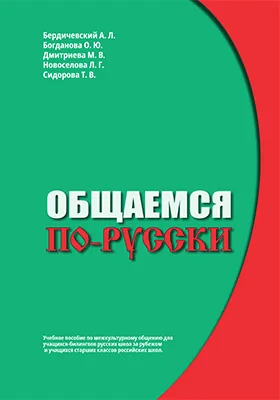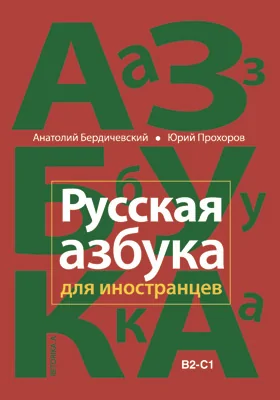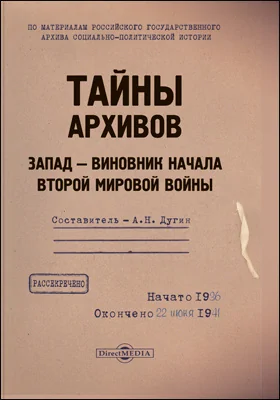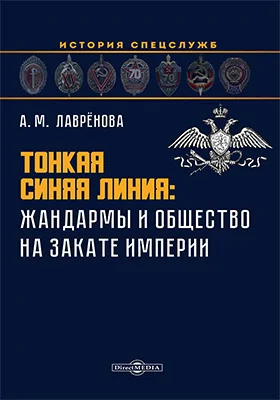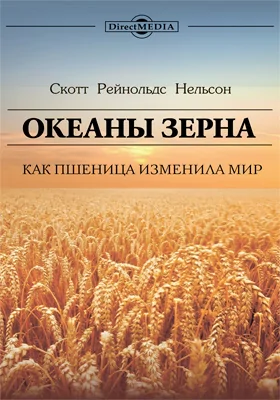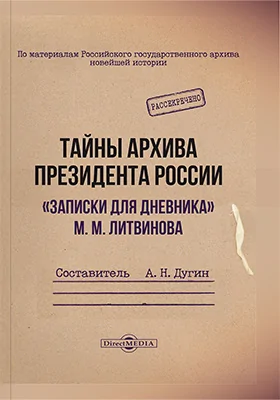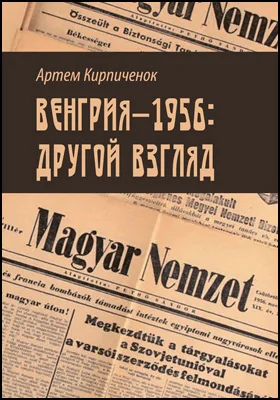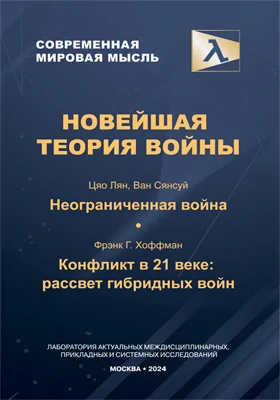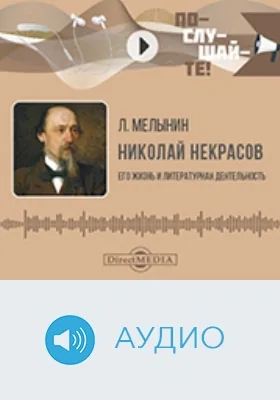
Практический курс английского языка : фонетический аспект
Здесь можно купить книгу "Практический курс английского языка : фонетический аспект" в печатном или электронном виде. Также, Вы можете прочесть аннотацию, цитаты и содержание, ознакомиться и оставить отзывы (комментарии) об этой книге.
Автор: Яна Усачёва
Форматы: PDF
Издательство: Российский государственный гуманитарный университет
Год: 2019
Место издания: Москва
ISBN: 978-5-7281-2495-5
Страниц: 171
Артикул: 80171
Возрастная маркировка: 16+
Краткая аннотация книги "Практический курс английского языка"
Цель пособия — формирование языковых компетенций, необходимых для успешного осуществления устной и письменной межкультурной коммуникации. Задачи данного издания — систематизированное объяснение, тренировка и закрепление основных артикуляционных, произносительных и ритмико-мелодических навыков устной английской речи. Каждый раздел завершается специальным блоком с разнообразными практическими заданиями на закрепление, отработку и контроль изученного материала. Пособие может использоваться для аудиторных занятий и для самостоятельной работы студентов. Для студентов первого курса, обучающихся по направлению бакалавриата 45.03.01 «Филология» с направленностью «Прикладная филология (иностранные языки)» и специальности 45.05.01 «Перевод и переводоведение».
Содержание книги "Практический курс английского языка : фонетический аспект"
Предисловие
1. The speech apparatus and its functions
1.1. С троение и функционирование речевого аппарата
1.2. А ртикуляционные базы английского и русского языков
1.3. В опросы и задания по теме
2. The sound system of English vowels and consonants
2.1. Key to phonetic symbols for English
2.2. The classification of 24 English consonants
2.3. How to pronounce the English consonants
2.4. The classification of 22 English vowels
2.5. How to pronounce the English vowels sounds
2.6. Practical tasks
3. The syllable formation in English
3.1. The structures of syllables in English
3.2. The four basic types of syllable in English
3.3. How to pronounce the six English vowel letters in monosyllables
3.4. Practical tasks
4. The syllable division for two-syllable words in English
4.1. How to define the syllabic boundary and how to read vowels in the stressed syllable
4.2. How to read the unstressed vowels in the final syllable
4.3. How to read words with syllabic sonorants
4.4. Practical tasks
5. The word stress in English
5.1. The nature of word stress in English
5.2. The basic rules of stress in polysyllabic English words
5.3. Practical tasks
6. Intonation of English speech
6.1. Intonation and its components
6.2. The structure of the English intonation pattern
6.3. The kinds of Pre-Heads in English intonation
6.4. The types and kinds of Heads in English intonation
6.5. The kinds of nuclear tones in English intonation
6.6. The kinds of Tails in English intonation
6.7. Intonation of different sentence types in English
6.8. Practical tasks
7. The declamatory (artistic / acquired / stage) phonostyle of English speech
7.1. The sample of an audiotext analysis
7.2. How to investigate a text
8. The best of British poetry
8.1. Introduction. What is “poetry”?
8.2. William Shakespeare. Sonnets
8.3. William Shakespeare. Extracts from plays
8.4. William Blake. “The Tyger”
8.5. William Wordsworth. Poems
8.6. George Gordon Byron. “She walks in beauty”
8.7. Elizabeth Barret Browning. “How do I love thee?”
8.8. Lewis Carroll. “Jabberwocky”
8.9. Redyard Kipling. “If”
8.10. Roald Dahl. “Little Red Riding Hood and the Wolf”
9. Appendices
9.1. Developing your voice
9.2. The House that Jack Built
9.3. 50 English tongue twisters
9.4. Poems on English pronunciation
9.5. Glossary of the main terms
10. References
Все отзывы о книге Практический курс английского языка : фонетический аспект
Отрывок из книги Практический курс английского языка : фонетический аспект
242.2. The classification of 24 English consonants1. The degree of noise: 1.1. noise (the vocal tract is either blocked or restricted so that there is audible friction and more noise than tone): [ p t k f θ s ʃ ʧ h b d g v ð z ʒ dʒ ] (17) 1.2. sonorous /sonorant (marked by a continuing resonant sound and having more tone than noise): [ m n ŋ l r w j ] (7) 2. The work of the vocal cords (NB: except sonorants): 2.1. voiceless (the vocal cords do not vibrate): [ p t k f θ s ∫ ʧ h ] (9) 2.2. voiced ( the vocal cords vibrate): [ b d g v ð z ʒ dʒ ] (8)3. The force of exhalation (NB: except sonorants): 3.1. strong/fortis (with muscular tension): [ p t k f θ s ∫ ʧ h ] (9) 3.2. weak/lenis (with little muscular tension): [ b d g v ð z ʒ dʒ ] (8) 4. The type of obstruction and the manner of articulation (the specific process of producing consonant sounds): 4.1. occlusive (articulated with a complete obstruction of the breath passage) (9)4.1.1. plosive: [ p t k b d g ] (6)4.1.2. nasal: [ m n ŋ ] (3) 4.2. constrictive (articulated with the air passage narrowed or drawn together (constricted), thus forming an incomplete obstruction (nar-rowing/constriction) so that the passing airstream produces noise or friction) (13)4.2.1. fricative: [ f θ s ʃ v ð z ʒ h ] (9)4.2.2. median: [ l r w j ] (4) 4.3. occlusive-constrictive (the airstream is first blocked and then released through a constriction / narrowing at the same place of articulation; obstruction is intermediate): affricate: [ʧ dʒ] (2). 5. The position of the soft palate (either it is raised or lowered):5.1. oral (the soft palate is raised): [ p t k f θ s ∫ ʧ h b d g v ð z ʒ dʒ l r w j ] (21)5.2. nasal (the soft palate is lowered & the nasal cavity resonates): [ m n ŋ ] (3).
С книгой "Практический курс английского языка" читают
Внимание!
При обнаружении неточностей или ошибок в описании книги "Практический курс английского языка : фонетический аспект (автор Яна Усачёва)", просим Вас отправить сообщение на почту help@directmedia.ru. Благодарим!




